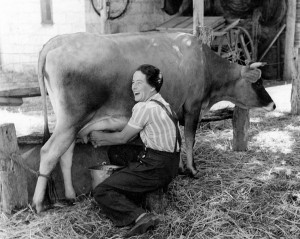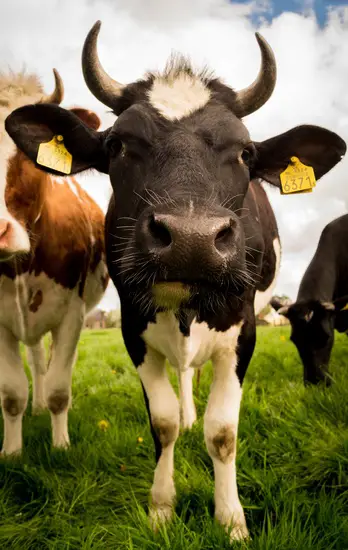
Raw milk has a long history in the United States and across the world, so why is it now banned in most states?
Have you ever wondered why RAW milk is illegal? While the main argument by the FDA is that it has a higher chance of having Salmonella, E. coli, or Listeria bacteria, the same can be said for many types of sushi and unpasteurized cider, believe it or not.
Yet those are legal (with exception of New York’s Cider Pasteurization Law and other isolated local laws). Why can’t raw milk, the type of milk that has sustained millions of people for generations, just come with a warning label?
Are we not trusted enough to make our own decisions about our health?
RAW milk was legal until 1986 & today the ban is based on mainly one study
 The FDA banned unpasteurized dairy sales after a 1986 Public Citizen lawsuit, after the Health Research Group of Public Citizen Group heavily petitioned FDA to do so.
The FDA banned unpasteurized dairy sales after a 1986 Public Citizen lawsuit, after the Health Research Group of Public Citizen Group heavily petitioned FDA to do so.
Recently, both FDA and CDC are seen quoting the same one study to back their former decision. The study looked at the years between 1993 and 2006 and found 121 foodborne illness outbreaks associated with milk products: 1,571 cases, 202 hospitalizations and 2 deaths. That is about 9 outbreaks per year. According to CDC, 75% are linked to unpasteurized milk products – about 6-7 outbreaks per year.
How high is the risk, actually?
The CDC states, “While it is possible to get foodborne illnesses from many different foods, raw milk is one of the riskiest of all.” But is it so?
According to the CDC, 48 million people (1 in 6 in the U.S.) get sick by contaminated food annually. In just one year, 2009-2010, there have been 1,527 outbreaks, 29,444 illnesses, 1,184 hospitalizations and 23 deaths. And the food that caused it varies from shellfish and eggs, to sprouts and vine-stalk vegetables.
This year there were Salmonella outbreaks linked to cucumbers, pork, frozen chicken and frozen tuna; last year E. coli outbreaks linked to clover sprouts and ground beef; and Listeria outbreaks linked to ice cream, caramel apples, and cheese between 2014-2015.
Most of these cases have one thing in common: the contaminated produce was from a large farm or company, often sourced from a different state or even country.
That seems high risk. But we get a little warning sign on the package and are allowed to make our own choices. And what about milk?
 While there is no nationwide statistic about how many people drink raw milk (perhaps because most hide the said fact), Time reported that in just California, 100,000 consumers drink raw milk on a weekly basis.
While there is no nationwide statistic about how many people drink raw milk (perhaps because most hide the said fact), Time reported that in just California, 100,000 consumers drink raw milk on a weekly basis.
Meanwhile the CDC is trying a scare tactic by telling us that there was a 70% increase of illnesses associated with raw milk – but the risk of getting sick is actually slim.
Between 2007 and 2012, the data shows that there were 81 outbreaks, 979 illnesses, 73 hospitalizations, and 0 deaths linked to unpasteurized milk.
Let’s pretend for a second that no one else drinks RAW milk in this country, just the 100,000 Californians. We know that they drink it weekly, let’s say they only drink one glass per week. That would mean that Californians drank 100,000 glasses per week every 52 weeks of the year for five years – which makes 26 million glasses of milk consumed. Out of which, 979 illnesses arose – making it about 0.0037% chance of getting sick. That is while we don’t take into account those who drink more than one glass per week and not taking into account all other 49 states (the estimated amount of people who drink some amount of raw milk nationwide is about 9 million).
If not to protect the consumers, then why the ban?
Since then the ban of RAW milk, an ongoing battle has been waged. The FDA has gone on the offensive and has raided farms, stopped food trucks, and sued local businesses for trying to bring raw milk products to those who want it; while the consumers have bought “cow shares” from local farms, called it “pet food,” and even bought their own cows to get around the laws. In the end, we are left with hundreds of thousands of otherwise law-abiding citizens, who break the law for what they believe will be healthy for them.
As of 2013, 40 states ban retail sale of raw milk, and 13 states ban unpasteurized milk products completely. You can see the updates about legality of raw milk in your state at RealMilk.com.
Looking at the risks that are clearly not higher than many other foods (legal to consume), for many farmers and buyers it is obvious that the ban is not to protect our health. Many have theorized that it is simply in place to protect the dairy market – pasteurized milk’s longer shelf life is more profitable and easier for the big companies to produce.
“If secretive government regulators are successful in their efforts to deprive consumers of unpasteurized dairy products, they will be emboldened to push us farther toward their vision of reliance on sterile factory food,” writes David E. Gumpert in The Raw Milk Revolution: Behind America’s Emerging Battle over Food Rights.
What are your experiences with raw milk and do you think it should be legal? Let us know in the comments section. You can also subscribe for more by clicking here.
Thanks for installing the Bottom of every post plugin by Corey Salzano. Contact me if you need custom WordPress plugins or website design.




